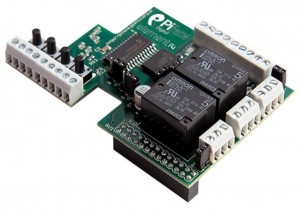I signed up for the Pimoroni Flotilla Kickstarter campaign (it feels like years ago now! 😉 ) and when the hardware turned up, I didn’t have a Raspberry Pi handy.
Continue reading “Pimoroni Flotilla and Rockpool on Ubuntu, without a Pi!”
A blog of my personal projects, including Raspberry Pi, Arduino, and anything else which catches my eye
I signed up for the Pimoroni Flotilla Kickstarter campaign (it feels like years ago now! 😉 ) and when the hardware turned up, I didn’t have a Raspberry Pi handy.
Continue reading “Pimoroni Flotilla and Rockpool on Ubuntu, without a Pi!”
Last night, for Hallowe’en, I made some simple animations on the PiLite and put it in our window to attract trick-or-treaters. Continue reading “PiLite Halloween Fun”
At January’s Wilmslow Coderdojo, we used the PiCamera for the first time. We had a lot of fun encouraging the Ninjas to learn a little bit of python while taking selfies and playing with effects.
Based on some excellent work by Carl over at fortoffee.org.uk I produced some worksheets which are attached here.
Because playing with the PiCamera is such an accessible fun activity, it provides an ideal opportunity to introduce something a little more complex. These worksheets use python, and the work is carried out completely at the command line, with no graphical IDE.
Not sure if this has been done before on the Pi version of Minecraft, but anyway to demonstrate the awesomeness of code reuse, here is a very simple re-engineering of my last bit of madness, Tetris on LEDs.
My latest bit of nonsense!
An implementation of Tetris on the Raspberry Pi, but instead of displaying on a screen, all output is via the LEDs of the Ciseco PiLite.
This board provides 4 buttons connected to Raspberry Pi GPIO to act as inputs, and 4 LEDs connected to GPIO to act as outputs. Very simple!
The motivation for the creation of this project was to try to do something with Raspberry Pi at our local CoderDojo which was different to what could be done with hardware that the “ninjas” had already been exposed to.
The ability to easily interface with hardware is what really sets the Raspberry Pi apart. Scratch, python, etc., are all available on the laptops which they are already using – so I thought this would show them a different side to programming.
Continue reading “DIY Raspberry Pi GPIO LEDs and Switches board”
I use archlinuxarm on pisaac’s SD card, because it’s the most basic system I could find.
I don’t need any fancy GUIs, and I also prefer “The Arch Way” generally to any other Linux distro paradigm.
I discovered an issue recently where my SD card (only 2GB) was getting very full, and tracked it down to systemd’s journal using almost 0.5GB.
Continue reading “On arch, systemd journal eats SD card space”
Hello everyone – apologies for the lack of posts lately – been a bit busy with “real life”!
Anyway, over the last couple of days, I’ve been playing with the Ciseco PiLite. This is a version of the Arduino LOL “lots of LEDs” board for the Raspberry Pi. Continue reading “Playing with PiLite and python”
Initially, I had thought that PiFaceDigital would be an ideal way to control Pisaac, my Raspberry Pi robot.
It has 8 digital inputs, with switches fitted to four, and 8 digital outputs, with LEDs fitted, of which two also control two hefty looking relays, which I thought would be capable of controlling my two motors.
In this post, I share some details of how Pisaac is constructed. Continue reading “Basic construction of Pisaac, my Raspberry Pi robot”